
PREV ARTICLE
NEXT ARTICLE
FULL ISSUE
PREV FULL ISSUE
IDENTIFYING OVERSTRUCK RUSSIAN COPPER UNDERTYPES: PART IAs mentioned in last week's Numismatic Diary, here is Part I of Steve Bishop's submission on identifying undertypes in
overstruck Russian copper coins. Thanks, Steve. -Editor
IDENTIFYING UNDERTYPES IN OVERSTRUCK RUSSIAN COPPER COINS It’s gratifying to be able to pass on specialized knowledge to other collectors in an area that those collectors may not be familiar. In this case, a question from Wayne Homren at our recent Nummis Nova dinner sparked this article. I have a specialty collection of overstruck copper coins of 18th century Russia. I have written on this topic before in the E-Sylum, notably on the reoverstriking program of Tsar Paul I in 1797. In that article, I touched on identifying coins from that program and the undertype coins that they were struck from. In this article, I will cover identifying the undertypes of the overstruck copper coins of Russia in general. I. Copper Coins of Catherine the Great (1762-96) Struck Over Coins of 1762 The two coins that instigated my conversation with Wayne are pictured below. 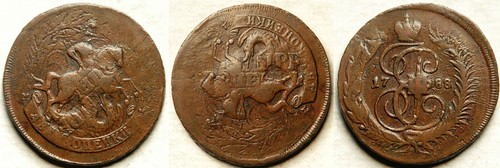 1788 MM 2 Kopeks struck over 1762 4 Kopecks 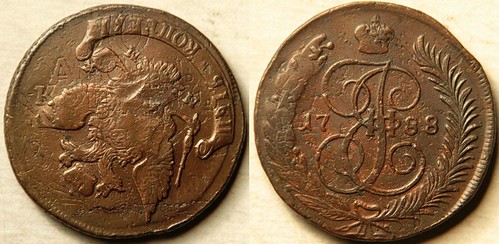 1788 MM 5 Kopecks struck over 1762 10 kopecks The question that Wayne asked about these two pieces was logical. How did I know that these coins were struck over the coins that I claimed they were, since he could not see any trace of the date 1762 in the undertype? It is a truism in overstrike collecting that the exact date of the undertype is not identifiable in many instances because the overstrike obliterates the old date. Thus, it is often the case that only the general type and a date range are identifiable. In this case, I know that the coins were struck over 1762 coins for two reasons. First, this particular date and mint combination are very commonly found struck over 1762 coins. The 1762 coins were overstruck by Catherine the Great because Peter III, who ruled briefly in 1762, had changed the monetary standard so that the value of the copper coins were doubled by halving the amount of copper. That is, the value of one ruble of copper was deemed now to be worth two rubles. One kopeck became two kopecks, two kopecks became four, etc. Catherine changed the monetary standard back to what it had been previously. Although two kopeck and five kopeck pieces of Catherine are sometimes found struck over two and five kopecks of Elizabeth, most of them were struck over the 1762 issue to prevent coins of the same weight but different denominations from circulating concurrently. This is the primary reason that the copper coins of Peter are so scarce. Secondly, Peter’s coins had a distinctive design, so by seeing the traces of his designs on an overstruck piece, no signs of the date are necessary to identify the date of the undertype, since his coins were struck only in 1762. The most obvious design device usually seen on an overstruck 1762 piece is the denomination inscription. Sometime the “4”, which is a denomination peculiar to 1762, may be seen, as in the coin pictured below. 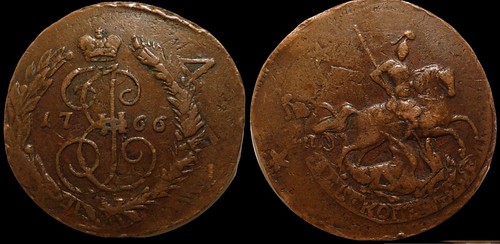 1766 CΠB 2 Kopecks overstruck on 1762 4 Kopecks In this case, the “4” would be the only thing that identifies the undertype, if not for the traces of the horse and rider and stars on the reverse, and would be more than sufficient. The two kopeck piece pictured at the beginning of this article does not show the “4”, but the rest of the denomination inscription is clearly seen. The five kopeck piece pictured above shows clearly both the “10” and the rest of the denomination inscription. Even a small amount of the denomination inscription is sufficient to identify the undertype in some cases. The five kopeck piece pictured below shows only a fraction of the denomination inscription (to the left of the eagle), but that is enough. 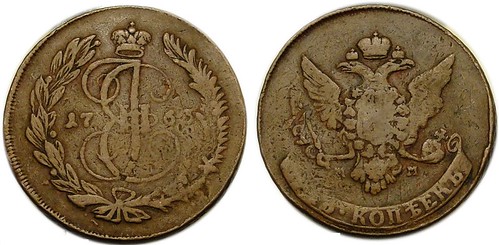 1763 MM 5 Kopecks Struck Over 1762 10 Kopecks As noted above, sometimes the smallest design element is sufficient to identify the undertype. One of the distinctive elements of the 1762 designs is a circle of stars around the perimeter, the number of stars reflecting the denomination. In the five kopeck piece pictured below, many of the stars are visible, which makes it easy to identify the undertype, even though none of the other 1762 design elements, other than a portion of the eagle’s wing within the stars and the “10” on the obverse, may be seen. Indeed, even the appearance of a single star would be sufficient. 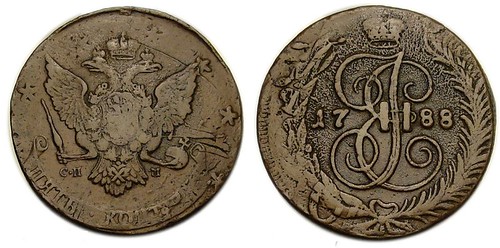 1788 CΠB 5 Kopecks struck over 1762 10 kopecks For the convenience of the reader, four and ten kopeck pieces of 1762 are shown below so that all of the distinctive design elements may be seen. 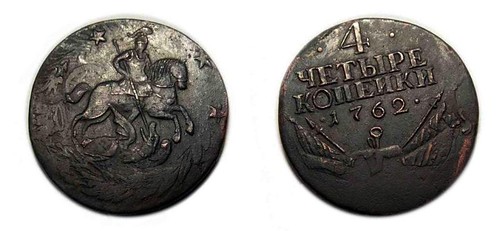 1762 4 Kopecks 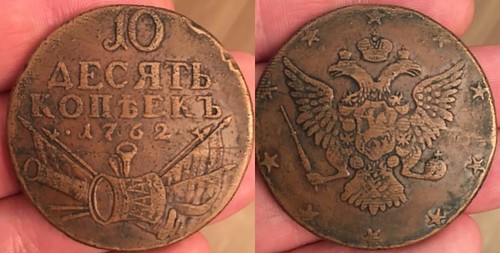 1762 10 Kopecks See next week's issue for Part II. -Editor
To read the earlier E-Sylum article, see: 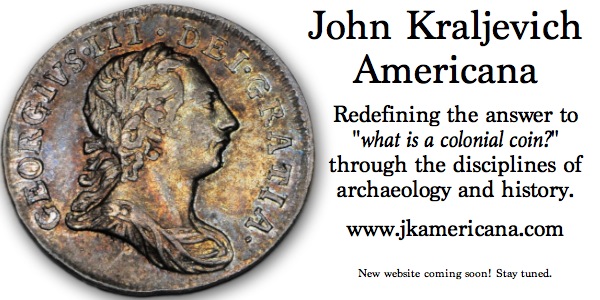 Wayne Homren, Editor The Numismatic Bibliomania Society is a non-profit organization promoting numismatic literature. See our web site at coinbooks.org. To submit items for publication in The E-Sylum, write to the Editor at this address: whomren@gmail.com To subscribe go to: https://my.binhost.com/lists/listinfo/esylum All Rights Reserved. NBS Home Page Contact the NBS webmaster 
|